452 Search Results for visual supports
January 26, 2013
by Carole Zangari -
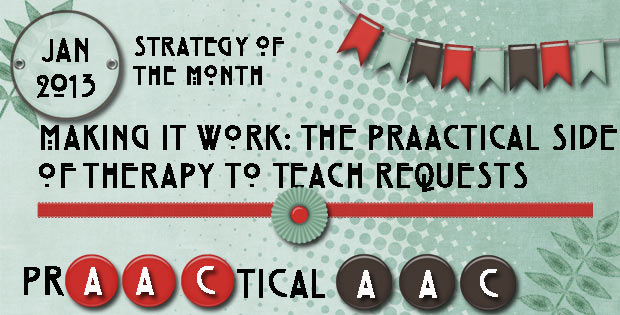
This month we’ve been talking about requesting and choicemaking, specifically how to teach it. Today, we’ll put it into a clinical context by talking about a hypothetical session that targets this skill, but also highlights other strategies. As you read about the materials, preparation, and script, look for how they incorporate strategies such as building specific communication opportunities {CO}, aided language input {ALI}, and expansions {EX}. The clinician also builds in repetition with variety so that there is sufficient opportunities for teaching and practice using multiple modes of communication. In this scenario, you’ll meet Jenna, a 5 year old with significant language difficulties secondary to Cri du Chat syndrome. Jenna’s communication system includes about a dozen manual signs (SIGN), 20-25 word approximations (SPEECH), a few gestures (GEST), some manual communication boards (COMM BD), and an iPad with a full-featured AAC app (iPAD). She also uses movement (MOVEMT), vocalizations (VOC), and... [Read More...]
January 23, 2013
by Carole Zangari -
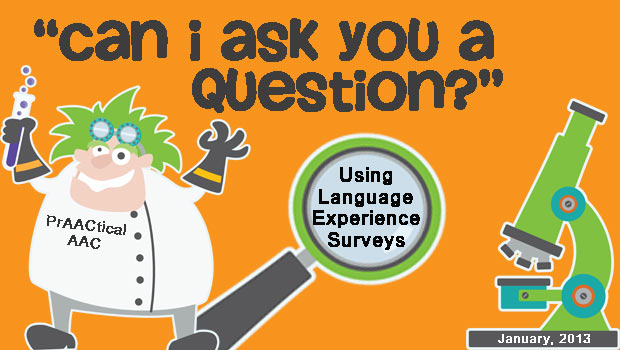
Want to give your AAC learners more frequent opportunities to interact with others? We love using Language Experience Surveys for this purpose. The concept is a simple one. Once you have a language goal in mind, craft a survey with a key question that the communicator can use as a conversation starter. After some instruction and practice, they can then ask people the question. You’ll need to create visual supports for the survey so that the communicator can use it as a cue and show to the interaction partners. In some surveys, the partners then use the visual support to record their responses. Putting the visual support on a clipboard works well in some situations. The simplest way to do this is with a forced-choice question with a list of response options. The survey could be about favorite TV shows or places to visit, for example, and show different options.... [Read More...]
January 16, 2013
by Robin Parker -
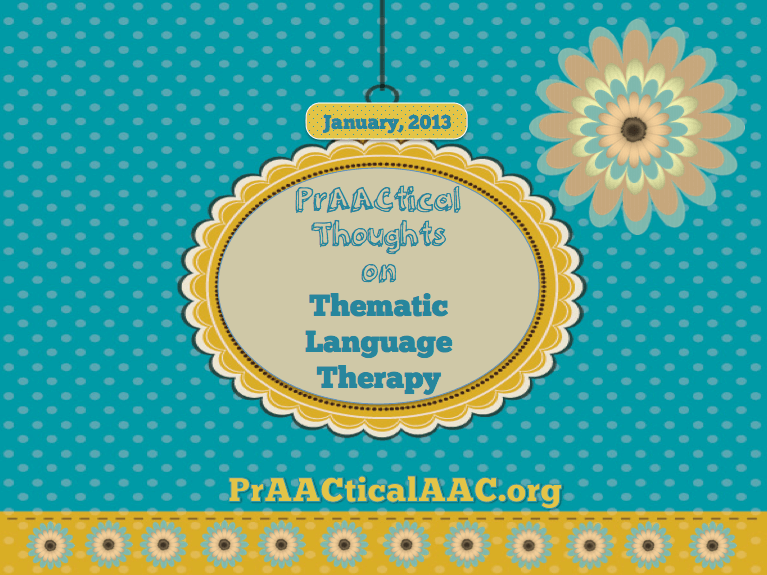
Thematic language therapy can be part of a meaningful language experience. This is true for everyone but especially helpful for learners with social communication/language difficulties. The theme of a session or theme of a month (or semester) can help a learner understand the relationship of individual activities to a larger main idea. For some learners it is easier to understand the details than to understand the ‘big picture’. By adding well thought out thematic features in intervention, the learner can then have many opportunities to relate the component parts of a theme to a main topic. Another aspect and benefit of thematic language learning has to do with word, concept, & vocabulary access. If a theme is used in a variety (or ALL) activities, there is a greater chance that the learner will be using similar words and concepts in talking, listening, reading and writing. By using all language modalities, vocabulary, word... [Read More...]
January 14, 2013
by Robin Parker -
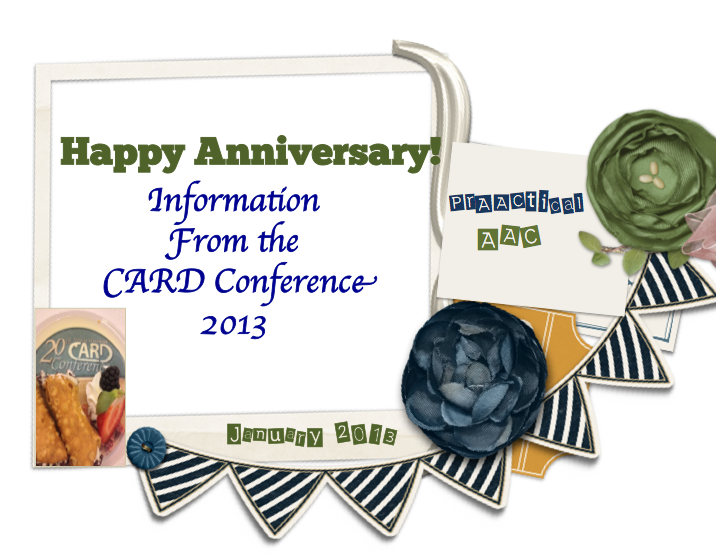
It was more than 20 years ago when the idea of a Florida Statewide Autism Resource Center was formed. This weekend marked the 20th Anniversary Celebration Conference of that unique and progressive vision. The Center for Autism & Related Disabilities (CARD) was created and flourishes through the collaboration of so many dedicated and energetic parents and professionals. Today, CARD is known as ‘Florida’s First Choice for Autism Support’. What is CARD? CARD is a comprehensive outreach and support program serving people with autism and related disabilities, their families, and the professionals who work with them. CARD seeks to provide support and assistance with the goal of optimizing the potential of people with autism, dual sensory impairment, and related disabilities. CARD is a Florida State Grant Program that provides all services at NO COST to the people who use them. The CARD Conference This years CARD conference was at the beautiful... [Read More...]
January 13, 2013
by Carole Zangari -
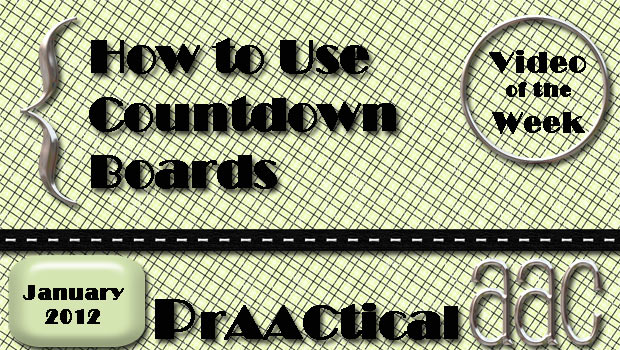
We’re big fans of visual supports and strategies that help individuals with AAC needs have a clear understanding of what is being expected of them. This video demonstrates a simple countdown board (called a visual timer here) that is used to show the AAC learners how much they need to do before moving onto another activity. Sue King, the teacher who made this video and blogs at TeacherSpace, did a great job of clearly explaining how to use a countdown board. We also love the prAACtical way that Ms. King individualizes the countdown board based on a learner’s individual interests. We’re ready to make some based on coffee, or maybe chocolates of the world. Who’s in?
January 8, 2013
by Carole Zangari -
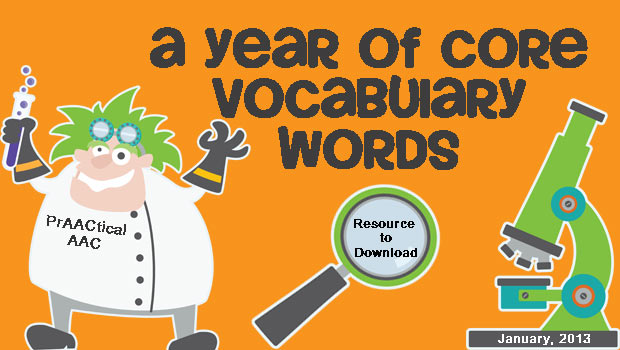
As clinicians, we frequently ask ourselves how we can help AAC learners become fluent with their core vocabulary words. A big part of the answer can be summed up in a word: Focus. The more we focus on those words, the more we can impact learning. There are lots of things competing for our attention, though, and sometimes we get distracted. Then it came to us: Visual supports work for SLP’s, too! When we saw another blogger post visual supports for sight word reading, we knew the idea had prAACtical application. So, we created 12 grids of core vocabulary words – one for each month of the year. Each grid has 12 cells labeled with core words. Plug in the AAC symbols that your client uses (e.g., PCS, SymbolStix, Unity, Pixons, etc), print, laminate, and keep them handy. Feel free to adapt the grids with other core words, if you... [Read More...]
January 4, 2013
by Carole Zangari -
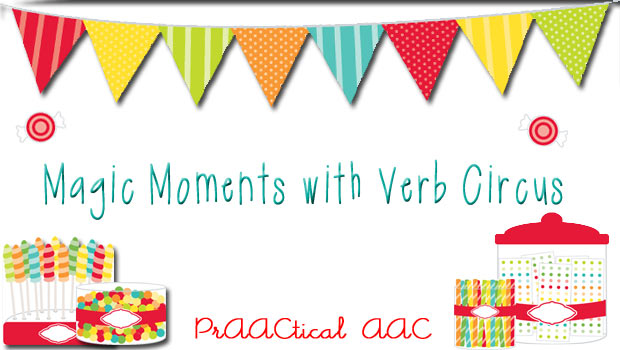
We are so excited to see the expanded web presence by SLPs who are blogging, running groups on Facebook, sharing resources on Pinterest, and maintaining online stores on TeachersPayTeachers. We’ve been thinking about how to connect with some of these creative professionals, both to extend our own professional learning networks and also to broaden the reach of our AAC message. Recently, when an opportunity to forge a few connections presented itself, we decided to collaborate with a few new SLP friends. Periodically, we will be featuring the materials of a fellow SLP who typically writes for colleagues serving primarily children with high incidence disabilities. They post great ideas and materials for students with articulation and phonological difficulties, fluency problems, and language disorders. We hope to put a prAACtical spin on their great ideas. In our inaugural post of this type, we hope to inspire some Magic Moments with fellow SLP Jocelyn... [Read More...]
January 2, 2013
by Carole Zangari -
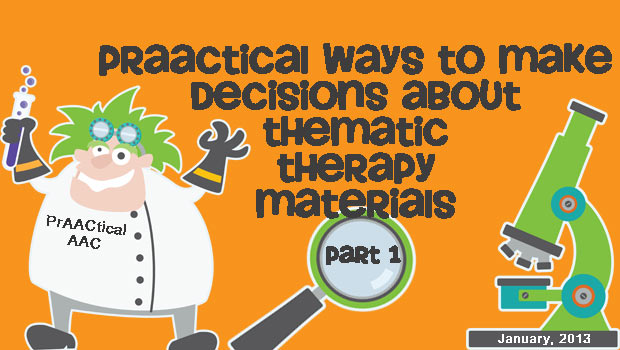
Is it just us, or have other people been blown away by the number of SLPs sharing therapy materials that they’ve designed? It seems like every time we visit sites like Facebook, Pinterest, and TeachersPayTeachers, there are more SLPs posting things that they’ve made. Most of them are incredibly adorable, reasonably priced, and even free. Many are based around a particular theme, such as a holiday or season, or a conceptual theme, such as pirates, the circus, or outer space. We love the cute graphics and fun fonts, and bet that many of you do, too. Cuteness and the ‘fun factor’ are compelling, but which ones are a good fit for your AAC therapy? In this post, we want to open a conversation with prAACtical thoughts about making solid clinical decisions when choosing therapy materials. I’ll be sharing some things that can be helpful when working with kids who have... [Read More...]
December 30, 2012
by Carole Zangari -
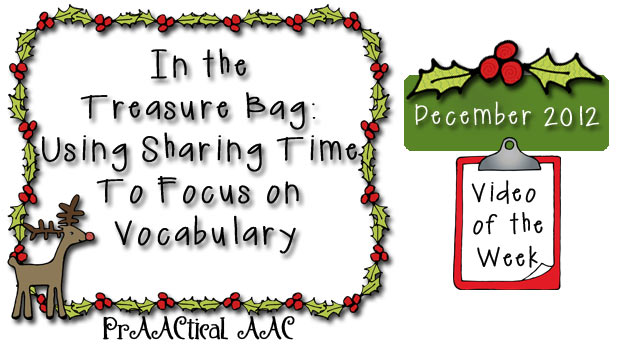
Over the past few months, we’ve been advocating for a multi-stage process for vocabulary teaching that begins with focused (aided) language stimulation and explicit instruction. The approach we described then moves into engaging practice activities while we continue to provide exposure and opportunities for retrieval, with periodic comprehension checks. This cycle allows SLPs to make use of research-based strategies in their semantic intervention and get the best outcomes for their AAC learners. So, when we came across this video about how to use ‘Sharing Time’ to build vocabulary, we knew we wanted to share it. It describes a classroom activity that could also be adapted for therapy groups in which students take turns bringing in an time from home to share with the class. We love the visual support that helps the students know what to talk about. It is a great reminder that visual supports are part of good... [Read More...]
December 28, 2012
by Carole Zangari -
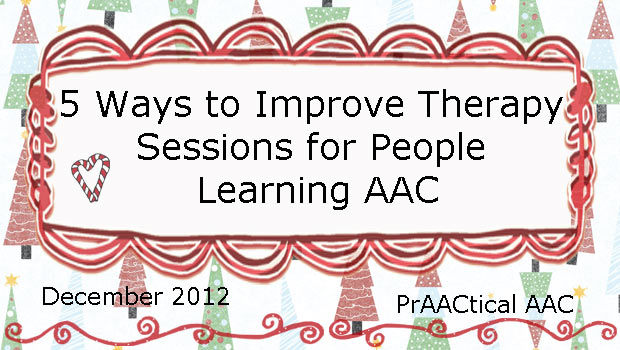
1. Start therapy as soon as you see the client: Savvy SLPs don’t waste a single second of therapy time. As soon as she saw 4 year-old Jonah in the waiting room, Chloe Clinician started sprinkling him with practice opportunities. They used vocalizations and gestures to greet other people. He ‘signed in’ at the front desk using a sheet she made up for Jonah to trace the first letter of his name. She blocked the door with her foot until he told her to ‘open’ and delayed his access to the beloved elevator button until he asked to go ‘up.’ By the time Jonah got to his therapy room, he had practiced skills in 5 different areas. This makes a clinical supervisor’s heart sing! 2. Speak AAC whenever you talk to the client. We’ve been shouting this from the virtual rooftops for quite awhile, but for those who missed it,... [Read More...]









